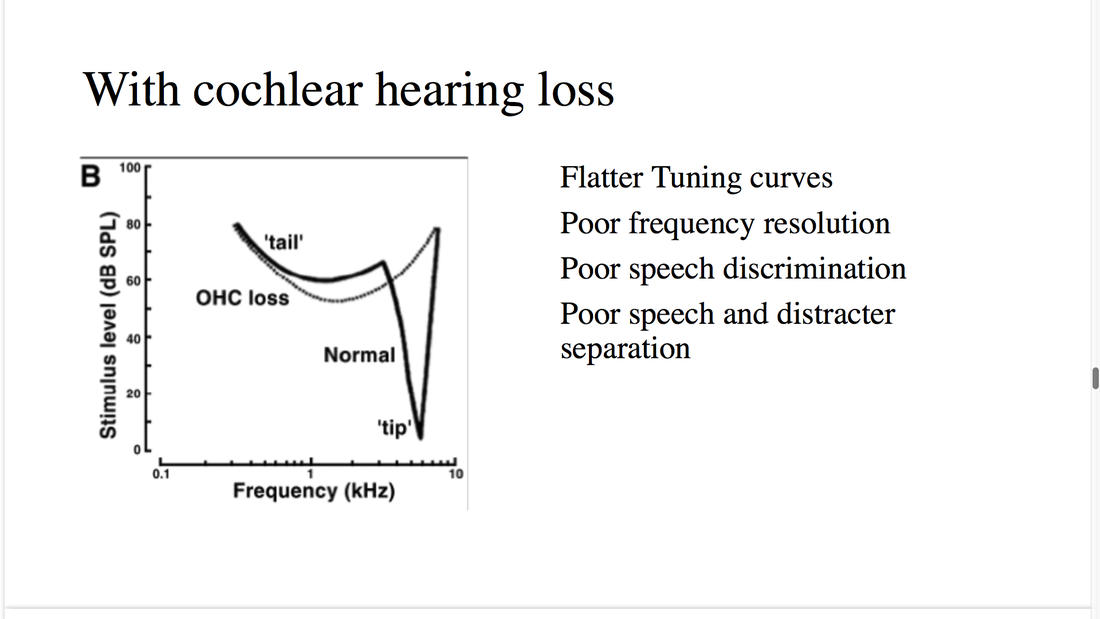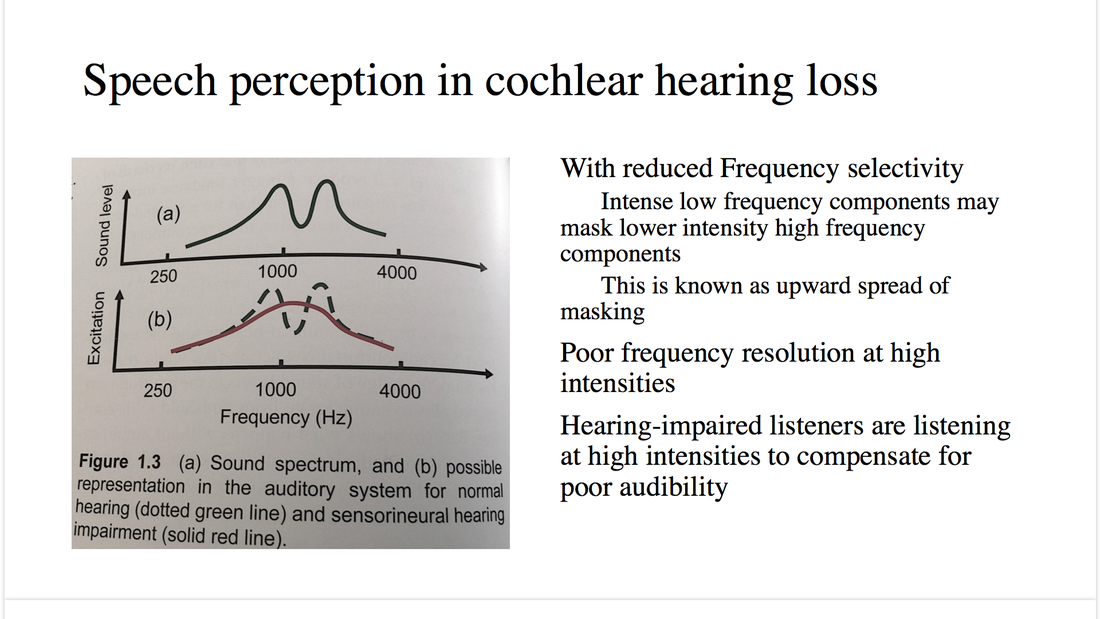Understanding the Hearing Aid Candidate
Problems faced by adults with hearing impairment
- #1 definitive reason was financial
- The interesting thing that is brought up is that the family receives considerable benefit
- "you may have a hearing loss but your family has a hearing problem."
- communication is rendered less rewarding with a family with someone with hearing loss
- SRTs and UCLs measure the dynamic range of a persons hearing
- you can do UCL for a tone
- dynamic range is collected from pure tone assessment
- example, if have a dynamic range of hearing at 4Khz of 20dB
- level of hearing is at 80dB and UCL is at 100dB - 20dB dynamic range
- someone will talk and the person won't hear, will raise voice and still won't hear, will yell and because of the dynamic range will feel like yelling; very limited range
- a hearing aid will treat soft sounds different in this frequency range and how it's going to treat different levels of sounds; soft sounds a little bit, medium sounds a lot
- a hearing aid will aid in the clarity for someone who is able to hear but not understand
- frequency resolution is really important when talking about environments
- for a vowel, it's partly a first formant but then it's a second formant, which could be missing too, could be more difficult to pick missing information because of frequency loss
Percentage of U.S. Citizens with Hearing Loss by Age
- not surprisingly, the prevalence of hearing loss increases with increasing age
- approximately 314 in 1,000 people over the age of 65 have hearing loss
- 40-50% of people 75 and older have a hearing loss
- 65% of the 30 million people with hearing loss are under 65
Decreased Audibility
- Hearing-impaired individuals cannot hear sounds that are below their threshold
- for speech it can be different depending on the intensity of the speech sounds
- hearing in the low frequencies
- hearing the high frequencies
- distance from the speaker
- the ear typically identifies the peaks in the spectrum to identify the sound
Decreased Dynamic Range
- the amount of sound between the threshold of hearing and threshold of discomfort
- in normal hearing adults it is typically 80-100dB
- reduced in hearing impaired individuals due to
- increased threshold
- abnormal growth of loudness
Frequency Resolution
- the ability of the system to analyze a sound into its component frequency
- the more "fine tuned" a system, the greater number of frequencies analyzed, the better its frequency resolution
- frequency selectivity
- frequency resolution plays an important role in separating speech from background noise
Decreased Frequency Resolution
- tonotopic representation of sounds in the auditory system
- the cochlea has relatively sharp tuning curves
With Cochlear Hearing Loss
- Flatter tuning curves
- poor frequency resolution
- poor speech discrimination
- poor speech and distracter separation
- with reduced frequency selectivity
- intense low frequency components may mask lower intensity high frequency components
- this is known as upward spread of masking
- poor frequency resolution at high intensities
- hearing impaired listeners are listening at high intensities to compensate for poor audibility
Temporal Resolution
- temporal resolution refers to the ability to represent information in the time domain
- envelope
- envelope is the slower content
- fine structure
- relatively fast - reflects spectral components of sounds in the sound waveform, and periodicity
Decreased temporal resolution
- hearing loss can result in deficiencies in coding the temporal information accurately
- the temporal fine structure is not preserved
- temporal cues are distored
- temporal cues in speech
- voice onset time
- formant transitions
- periodicity
Temporal Masking
- intense sounds can mask weaker sounds
- that come after them or that come before them
In Hearing Impaired adults
- increased temporal masking reduces sensitivity to soft sounds after an intense sound
- e.g. VC syllable Ash vs As
- In the presence of background noise
- normal hearing adults can listen in the gaps
- hearing impaired adults cannot make use of the gaps
- difficulties increase in the presence of background noise
How would we help in the clinic?
- we can help for audibility
- directional microphones, whatever we can do to get a better speech in noise performance

